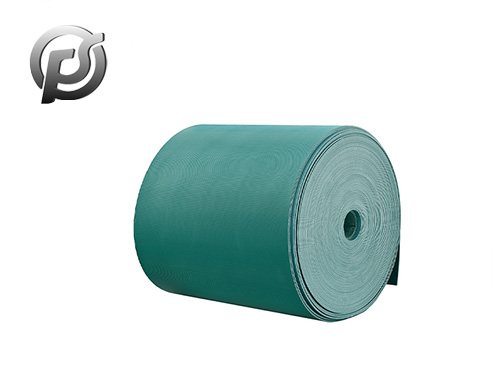High temperature resistant
conveyor belt is made of multi-layer rubber cotton canvas (terylene cotton) or polyester canvas covered with high temperature resistant or heat resistant rubber, vulcanized together by high temperature, suitable for conveying hot coke carbon, cement, slag and hot castings below 175℃.
1. Joint quality is not up to standard: The joint bonding supervision of conveyor belt is the most important part in the process of conveyor belt device. High temperature resistant conveyor belt is made of multi-layer rubber cotton canvas (terylene cotton) or polyester canvas covered with high temperature resistant or heat resistant rubber, vulcanized together by high temperature, suitable for conveying hot coke carbon, cement, slag and hot castings below 175℃. The quality of joint directly affects whether the conveyance is deformed or not. Broken belt caused by quality problems of vulcanized joint occurs from time to time, which not only affects production, but also causes personal injury. The quality of the joint is reflected in the consequences of use. If the immediate control is not strengthened in the bonding process, it is difficult to see the problem only by the completion acceptance. Therefore, it becomes important to strictly control the quality of the vulcanized joint in the process of conveyor belt installation.
2. No test adjustment is carried out after the device is realized: without running run-in, the conveyor belt of the new device is prone to local wear. Special attention should be paid to the funnel seasoning board, skirt board, baffle plate and other parts of the adjustment. Avoid the conveyor belt deviation, card material and other scenes. In addition, it is necessary to strengthen the monitoring of the running process of the conveyor belt to avoid blocking large materials and resulting in moderate wear of the conveyor belt.
3. The length of conveyor belt device is not suitable: whether it is the new belt device or the old belt replacement, if the entire conveyor belt device is wrongly planned and calculated carefully at that time, it will easily cause the situation that the conveyor belt is connected, and the direct result is that the counterweight (heavy hammer counterweight) hits the ground, resulting in starting skid. It is true that there was no problem at that time, and the test run was not a problem. However, the configuration position was low. After two or three months of operation, the counterweight sagging and the starting impact on the ground. This is because the plastic deformation and elastic deformation of the conveyor belt are not considered in the process of the device.
 Optimizing Operations with PE Conveyor Belts: Durability, Efficiency, and Versatility
Optimizing Operations with PE Conveyor Belts: Durability, Efficiency, and Versatility
 Exploring the Efficiency and Versatility of Light Conveyor Belts
Exploring the Efficiency and Versatility of Light Conveyor Belts
 Polyester Conveyor Belts: Enhancing Efficiency and Reliability in Material Handling
Polyester Conveyor Belts: Enhancing Efficiency and Reliability in Material Handling